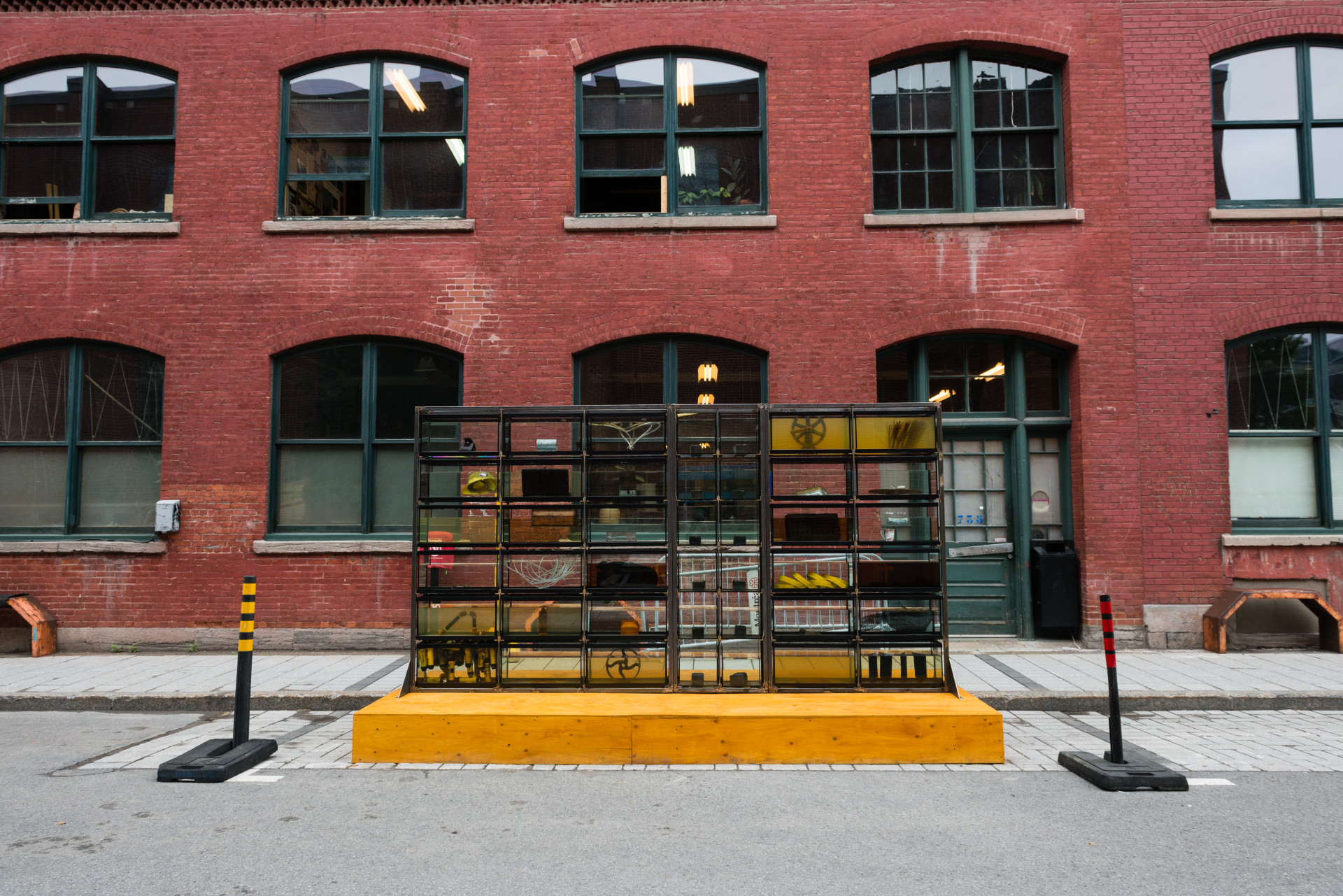
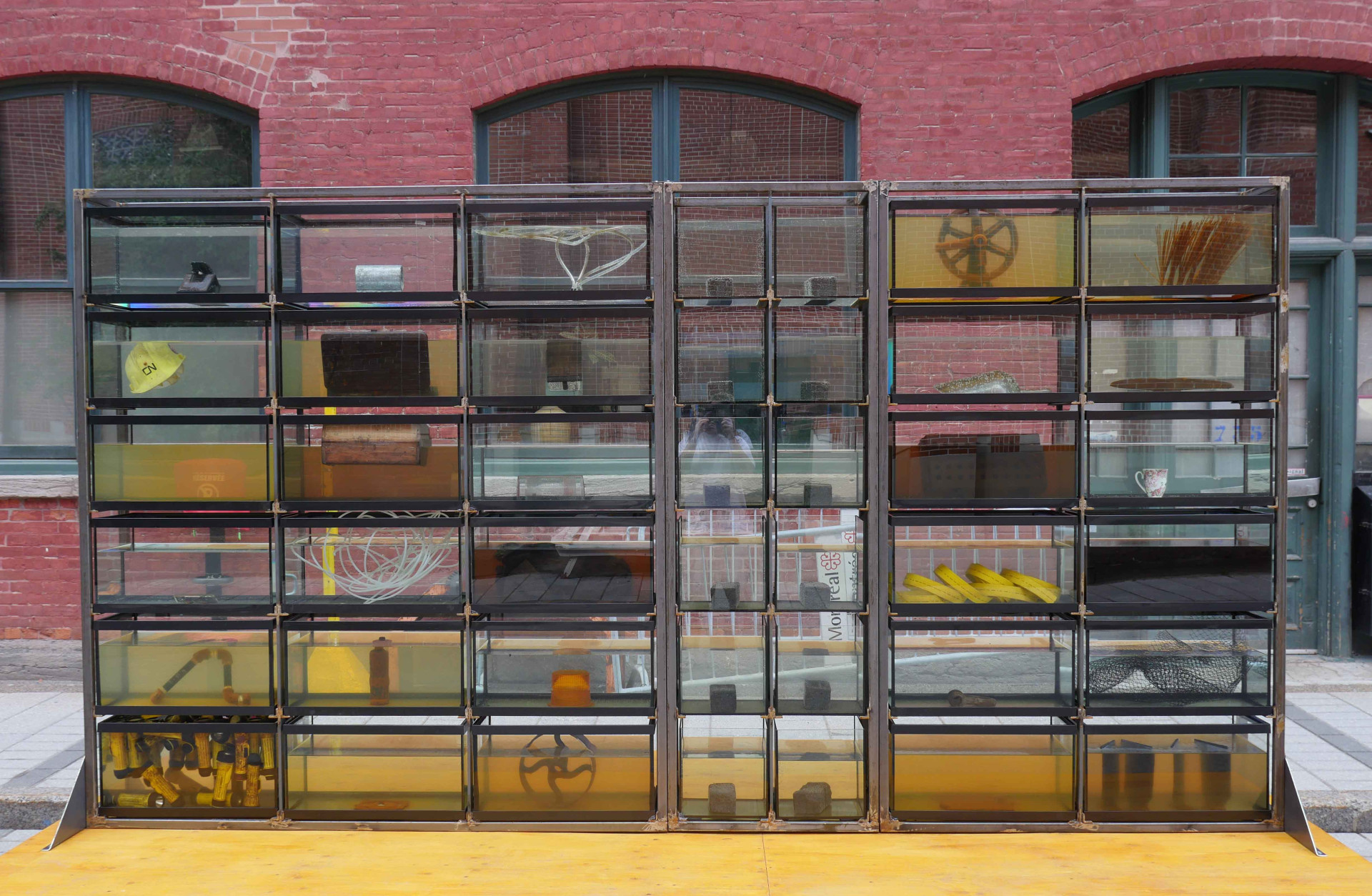
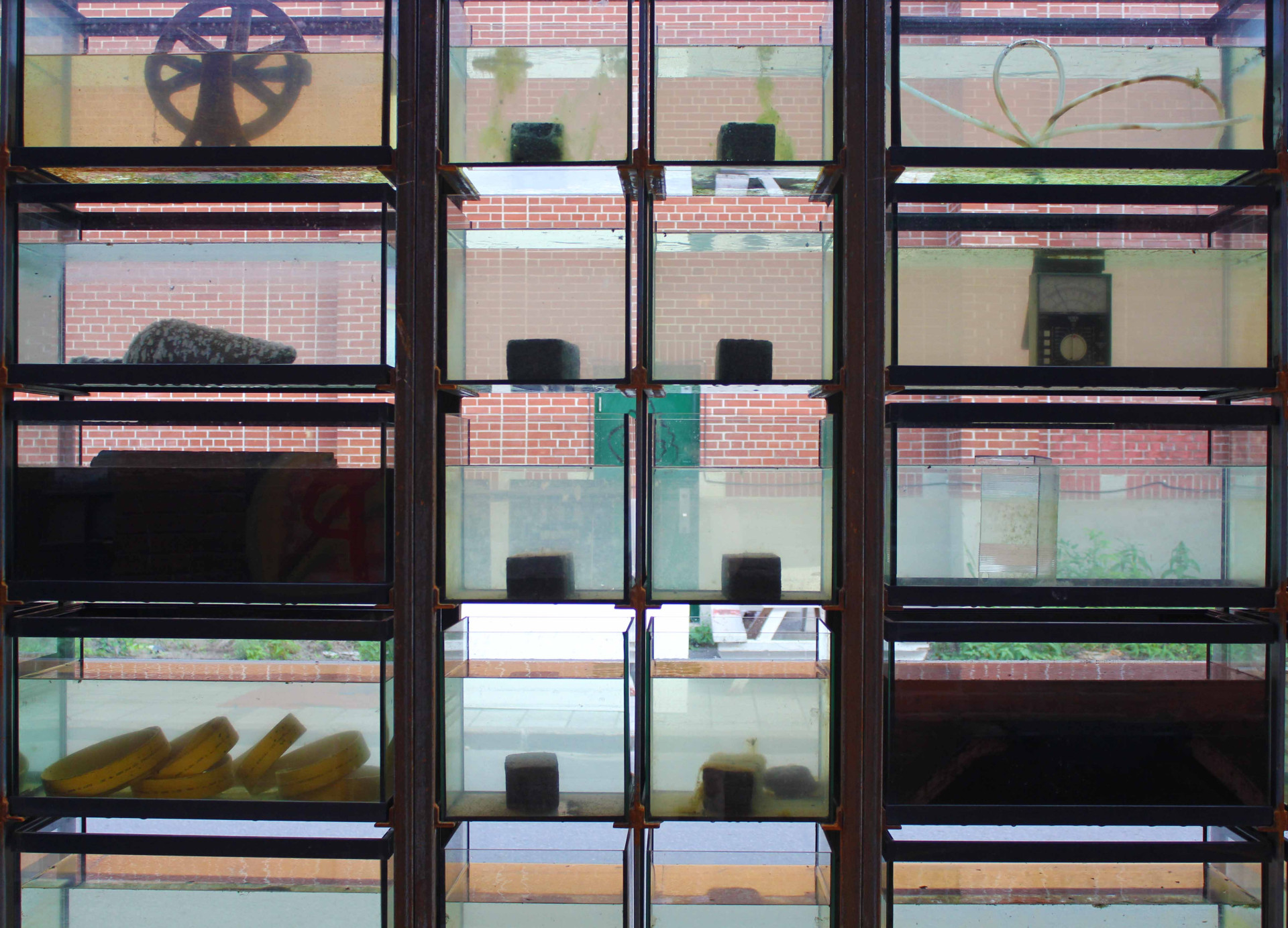

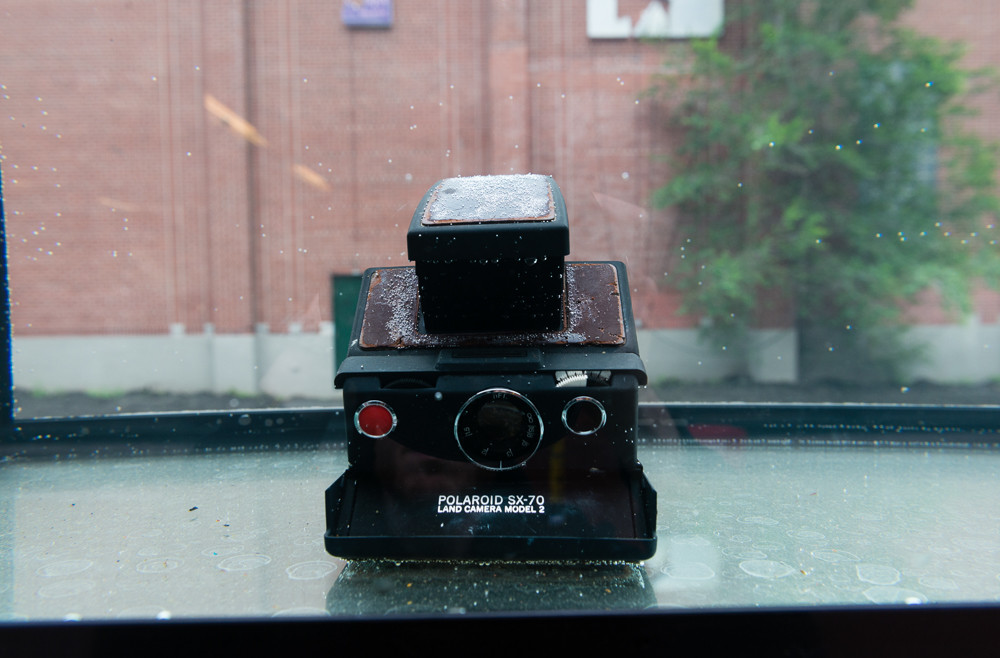
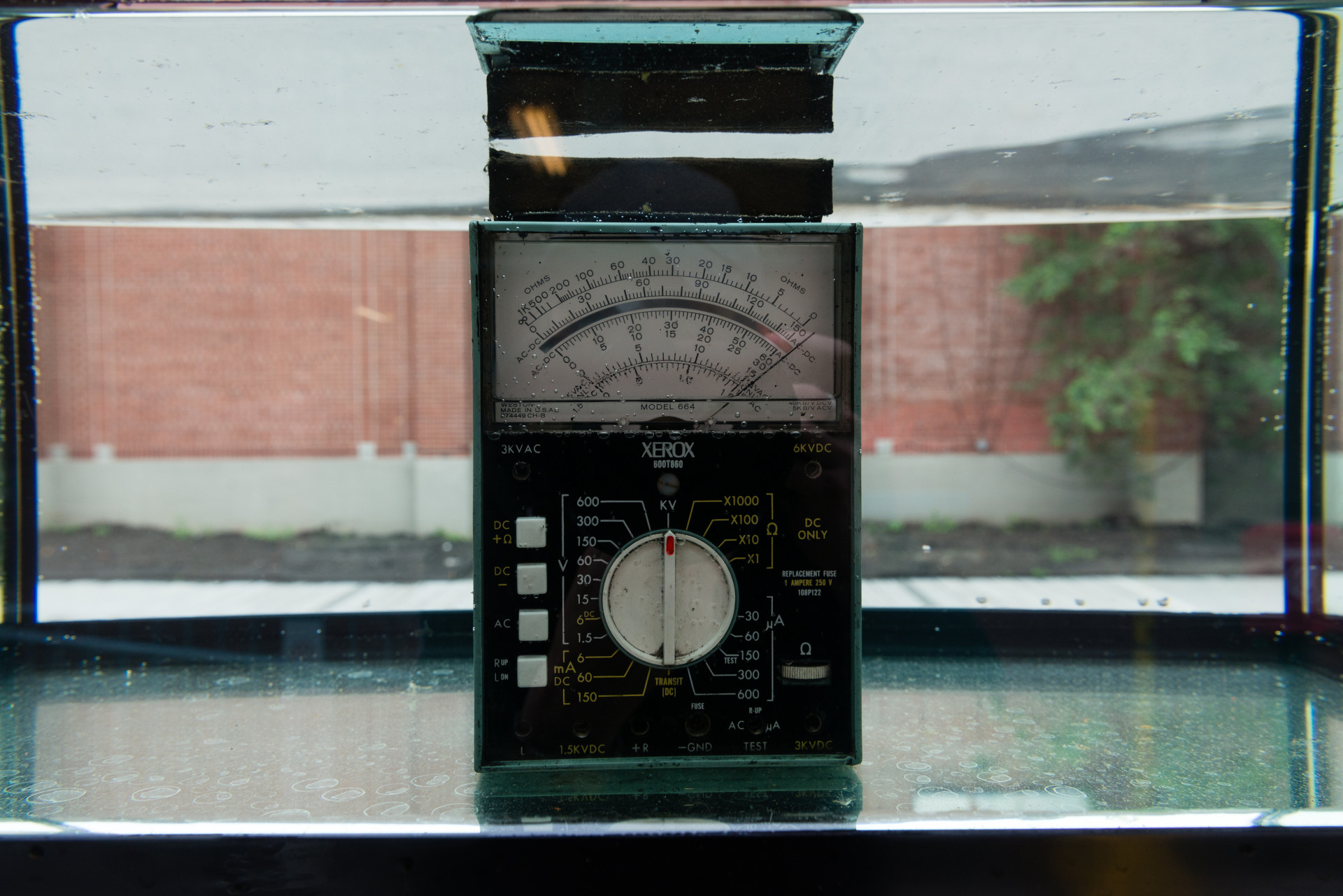
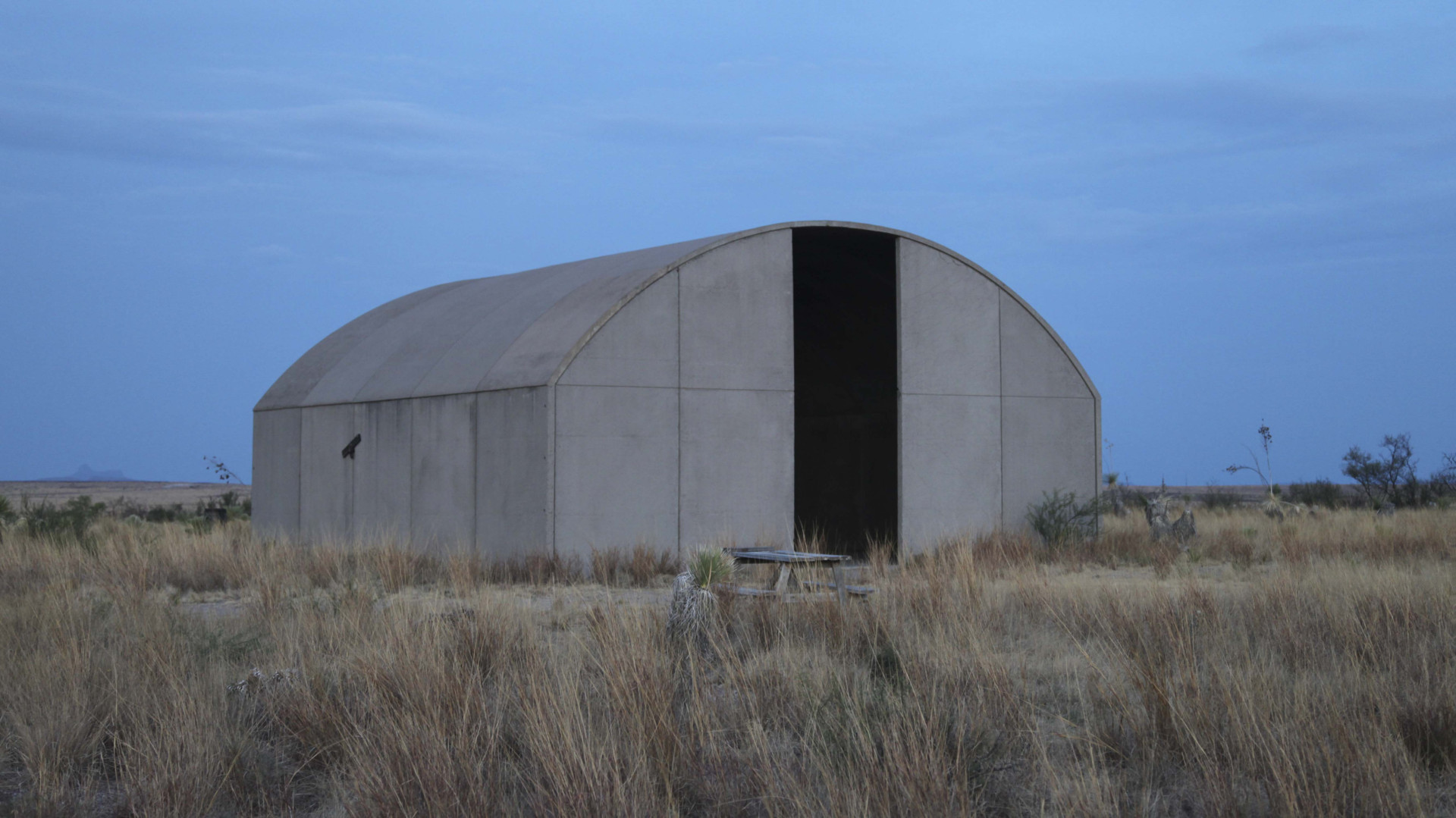
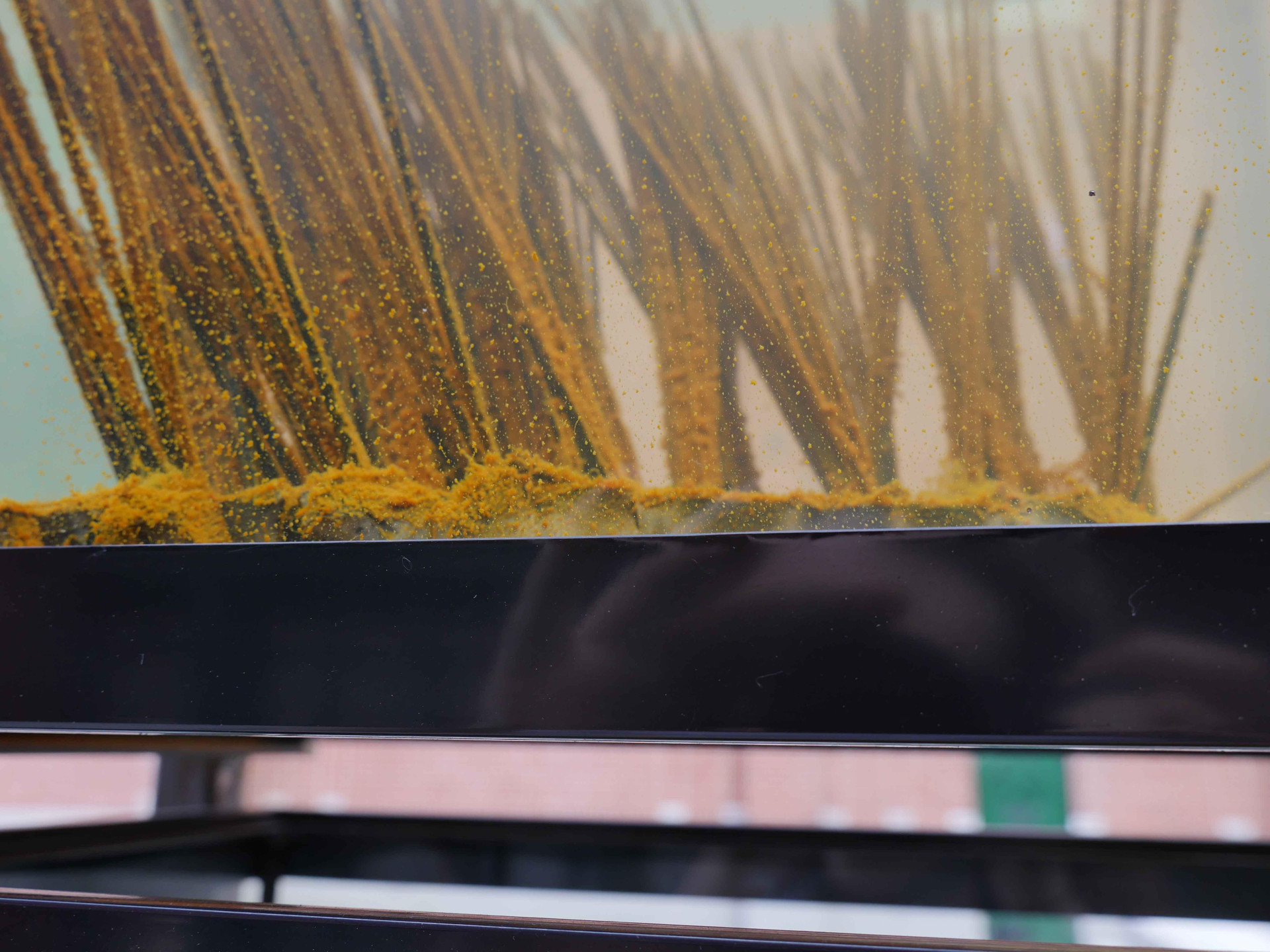

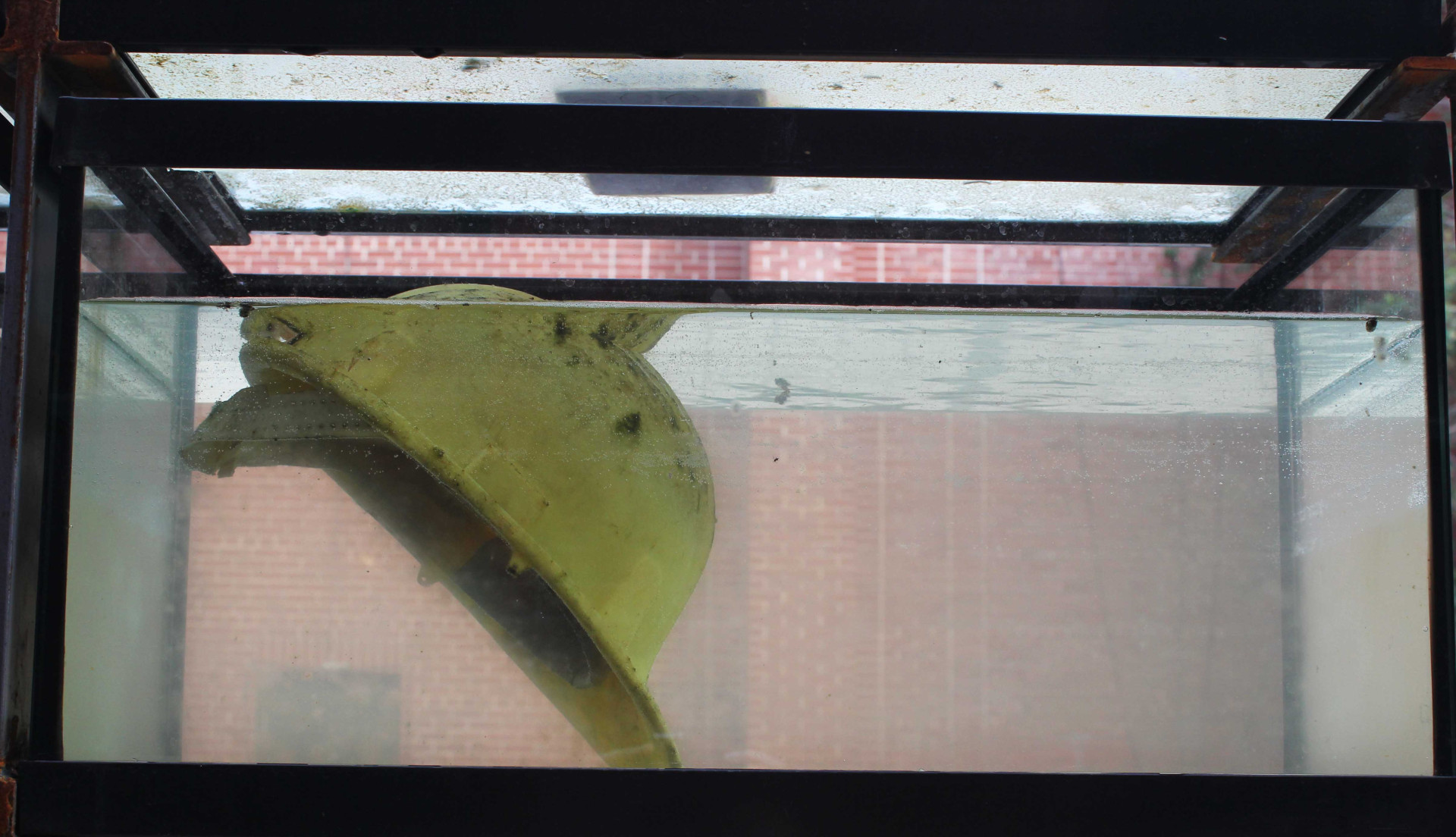
Emerging artist Antoine Caron examines the society around him and how it is collectively represented by placing his works, their viewers, and their environment in a situation of dialogue. Transfiguring everyday objects by deconstructing how they are usually looked at, Caron challenges the utilitarian essence of these objects, taking them beyond their original use into the realm of self-determination to present an analysis of social and political phenomena. He pays particular attention to emancipatory potential of his works and the plurality of meanings that may be created in visitors’ eyes over time.
In Unité d’habitation, Caron reinterprets the concept of the 'housing unit' by building a metallic structure of aquarium-modules, each of which inhabited by different types of algae and by objects found in the Darling Foundry. Theorized by Le Corbusier and Nadir Afonso, the 'housing unit' is a modernist architectural principle involving extremely functional yet brutal and unadorned housing complexes. Between 1947 and 1952, Le Corbusier built the first 'housing unit' in Marseille, which was called Cité Radieuse or Maison du fada. By incorporating an exogenous component – growing algae – with pre-existing components – found objects – Caron reprises the model of the 'housing unit' and plays the roles of urban planner, politician, and contractor. He reflects on the phenomenon of gentrification and the future of condominiums by casting a critical gaze at Le Corbusier’s utopia and the failure of Cité Radieuse.
The objects found by Antoine Caron, once abandoned, take on a new life. Leaving behind their original meaning, they return to the visitors’ gaze as artworks writing their own history over time. With the algae – fragile biological elements but very profligate reproducers – Caron also probes his work’s potential for failure. He thus places entropy at the heart of the work by playing on the random possibility of algae expansion and on the multiple possible developments of this work. The organic elements become vectors of disorder and disorganization that lead the aquariums to evolve in distinct ways, becoming metaphors for contemporary societies. A tension is thus percpetible between human order and natural disorder, the grid of the glass condominiums and the development of the internal ecosystem, the stasis of the objects and the unpredictable growth of the algae.
Unité d’habitation is poetic and organic, both immersing us in the past of the Darling Foundry and offering a perspective on very current political and social issues. The work, which will be in situ for the summer, becomes a metallic fabric made of interstices to fill, a frame shot through with vanishing lines, a work that will emerge and be transformed throughout the exhibition period. Like Alison Knowles decades ago, Caron materializes his own quatrain for the Place Publique, displaying a work that is open and always evolving:
A glass house
Using natural light
Inhabited by algae and old objects
In the Place Publique, in the heart of Griffintown
Caron is currently completing his bachelor’s degree in fine arts, concentration in visual arts, at Concordia University in Montréal.
After participating for a semester in a research program on the Place Publique under the supervision of Michael Robinson and Caroline Andrieux, Caron was selected to present Unité d’habitation in the context of the exhibition The House of Dust by Alison Knowles, displayed in the Darling Foundry’s indoor galleries.
Théo Gorin.
Curator
Théo Gorin
